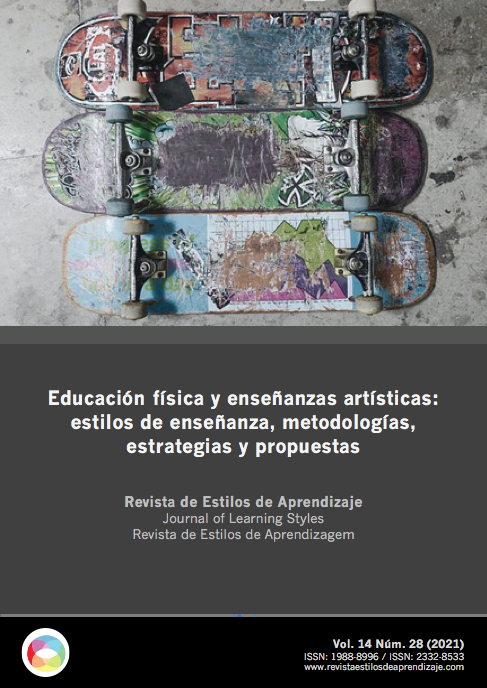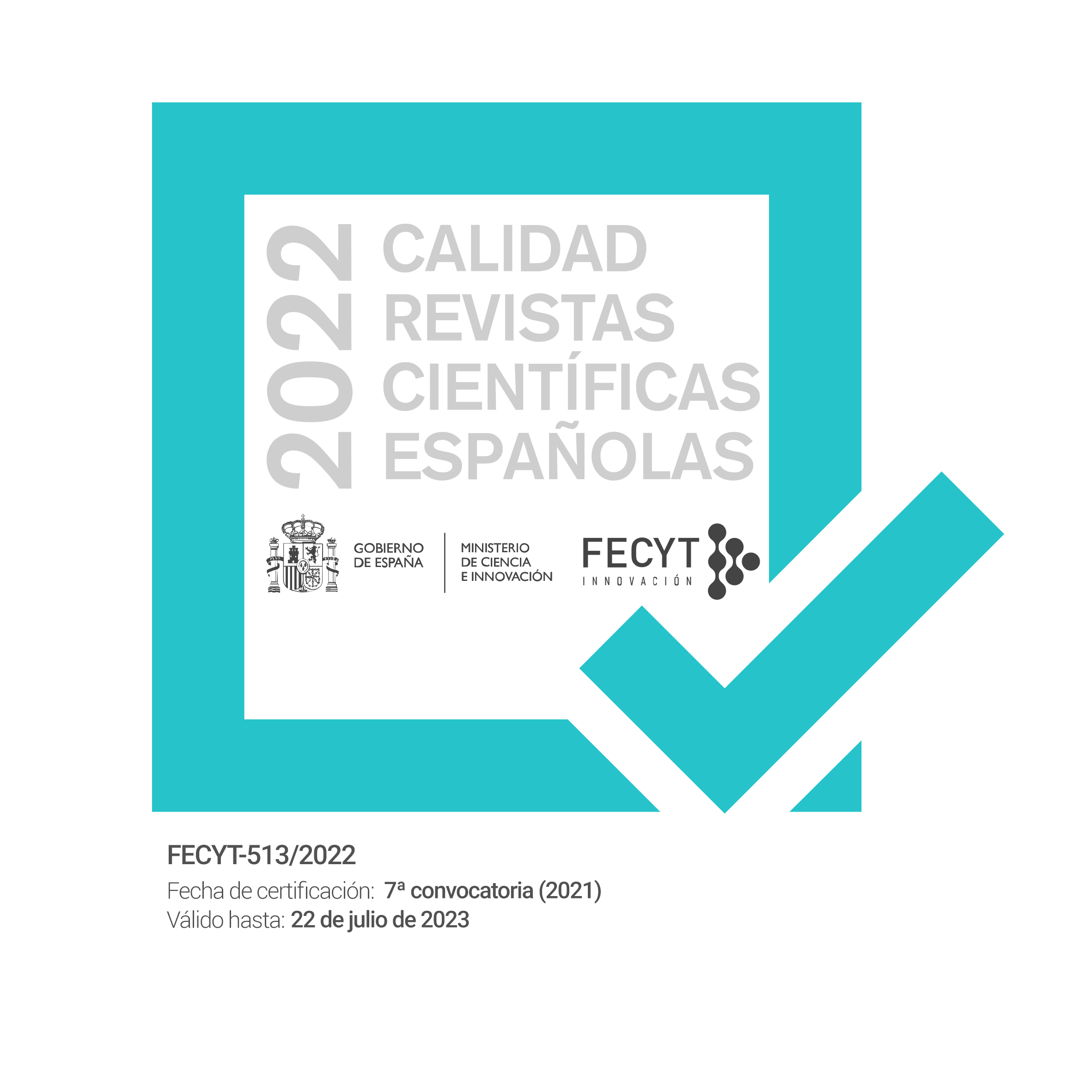Senior high school students’ learning styles and experiences in the emergency remote teaching
DOI:
https://doi.org/10.55777/rea.v14i28.3372Keywords:
learning styles; social presence; emergency remote teachingAbstract
Nowadays Mexican senior high school institutions are promoting temporally emergency remote teaching. Even though the instructional shift is just temporal, it is advisable to implement technology in education, consider student needs, learning styles, and promote student autonomy in the online learning experiences, Moreover, to include the teacher, the social, and the cognitive presences in the community of inquiry. This qualitative study aimed to analyze senior high school students' online learning experiences in relation to their learning styles. The sampling process was voluntary and consists of 37 participants. The results show a predominance of theorist students, followed by the pragmatists, and finally, activists. Favorable learning experiences involved teachers using appropriate strategies and materials to promote learning. Negative online learning experiences were due to students' lack of understanding and interaction, as well as teachers' lack of explanation, reinforcement, and feedback, which reflect the lack of cognitive and teacher presence and omission of elements in online learning experiences that address the particularities of students regarding their learning styles.
Downloads
References
Abdullah, M., Daffa, W. H., Bashmail, R. M., Alzahrani, M., & Sadik, M. (2015). The impact of learning styles on Learner's performance in E-learning environment. International Journal of Advanced Computer Science and Applications, 6(9), 24- 31. https://bit.ly/3a9qWrU
Agrawal, A. K., & Mittal, G. K. (2018). The role of ICT in higher education for the 21st century: ICT as a change agent for education. Multidisciplinary Higher Education, Research, Dynamics & Concepts: Opportunities & Challenges For Sustainable Development, 1(1), 76-83. https://bit.ly/329nTvv
Alonso, C. M., Gallego, D, J., & Honey, P. (1997). Los estilos de aprendizaje: Procedimientos de diagnóstico y mejora [Learning Styles: Diagnostic and Improvement Procedures] (7ª. Ed.). Bilbao, España: Mensajero.
Álvarez- Gayou, J.L. (2003). Cómo hacer investigación cualitativa. Fundamentos y metodología. México: Páidos.
Arrosagaray, M., González-Peiteado, M., Pino-Juste, M., & Rodríguez-López, B. (2019). A comparative study of Spanish adult students’ attitudes to ICT in classroom, blended and distance language learning modes. Computers & Education, 134, 31-40. https://doi.org/10.1016/j.compedu.2019.01.016
Barbour, M. K., LaBonte, R., Hodges, C., Moore, S., Lockee, B., Trust, T., & Kelly, K. (2020). Understanding pandemic pedagogy: Differences between emergency remote, remote, and online teaching. State of the Nation: K-12 e-Learning in Canada. Retrieved from http://hdl.handle.net/10919/101905
Barraza, A. (2006). La encuesta: ¿Método o técnica? Investigación educativa duranguense [The survey: method or technique? Duranguense educational research]. 5, 1-17. https://dialnet.unirioja.es/descarga/articulo/2880937.pdf
Candarli, D., & Yuksel, H. G. (2012). Students’ perceptions of video-conferencing in the classrooms in higher education. Procedia-Social and Behavioral Sciences, 47, 357- 361. https://doi.org/10.1016/j.sbspro.2012.06.663
Çapuk, S. (2015). ICT Integration models into middle and high school curriculum in the USA. Procedia-Social and Behavioral Sciences, 191, 1218-1224. https://doi.org/10.1016/j.sbspro.2015.04.409
Çelik, B., & Gündoğdu, K. (2016). The effect of using humor and concept cartoons in high school ICT lesson on students’ achievement, retention, attitude and anxiety. Computers & Education, 103, 144-157. https://doi.org/10.1016/j.compedu.2016.10.008
Chandra, V., & Briskey, J. (2012). ICT driven pedagogies and its impact on learning outcomes in high school mathematics. International Journal of Pedagogies and Learning, 7(1), 73-83.
Doulik, P., Skoda, J., & Simonova, I. (2017). Learning styles in the e-learning environment: the approaches and research on longitudinal changes. International Journal of Innovation and Learning, 21(4), 417-434. https://doi.org/10.1504/IJIL.2017.084359
Garrison, D. R., Anderson, T., & Archer, W. (2001). Critical thinking and computer conferencing: A model and tool to assess cognitive presence. http://hdl.handle.net/2149/740
Garrison, D. R., & Vaughan, N. D. (2008). Blended learning in higher education: Framework, principles, and guidelines. United States of America: John Wiley & Sons.
Hattie, J., & Timperley, H. (2007). The power of feedback. Review of educational research, 77(1), 81-112. DOI: 10.3102/003465430298487
Hayes, D. N. (2007). ICT and learning: Lessons from Australian classrooms. Computers & Education, 49(2), 385-395. https://doi.org/10.1016/j.compedu.2005.09.003
Herrera, L. (2012). Self-Access Language Learning: Students’ Perceptions of and Experiences Within this New Mode of Learning. Profile: Issues in Teachers’ Professional Development, 14(1), 113-127. https://revistas.unal.edu.co/index.php/profile/article/view/29061
INEGI. (2019). Estadísticas a propósito del día mundial del internet [Statistics on world internet day]. INEGI. https://bit.ly/3g47osX
ISBE. (2020). Recomendaciones de aprendizaje remoto durante la emergencia de Covid-19 [Remote learning recommendations during the Covid-19 emergency]. ISBE. https://bit.ly/3mF550L
Kefee, J. W., & Ferrell, B. G. (1990). Developing a defensible learning style paradygm. Educational leadership, 48(2), 57-61. https://eric.ed.gov/?id=EJ416436
Martínez, M. (2006). La investigación cualitativa: síntesis conceptual. Revista IIPSI, 9(1), 123-146. http://revistasinvestigacion.unmsm.edu.pe/index.php/psico/article/viewFile/4033/3213
Moto, S., Ratanaolarn, T., Tuntiwongwanich, S., & Pimdee, P. (2018). A Thai junior high school students’ 21st century information literacy, media literacy, and ICT literacy skills factor analysis. International Journal of Emerging Technologies in Learning (IJET), 13(09), 87-106. https://onlinejour.journals.publicknowledgeproject.org/index.php/i-jet/article/view/8355
Muñoz, J., & González, A. (2010). Teaching Reading Comprehension in English in a Distance Web-Based Course: New Roles for Teachers. Profile, 12(2). 69-85. http://www.scielo.org.co/scielo.php?script=sci_arttext&pid=S1657-07902010000200005
Nair, R. J. (2016). Self-image and self-esteem for a positive outlook. Training Manual on Theeranaipunya - Equipping Fisherwomen Youth for Future. ICAR-Central Marine Fisheries Research Institute, Kochi, 75-78. http://eprints.cmfri.org.in/10815/
Nikolopoulou, K., & Gialamas, V. (2016). Barriers to ICT use in high schools: Greek teachers’ perceptions. Journal of Computers in Education, 3(1), 59-75. https://doi.org/10.1007/s40692-015-0052-z
O’Connor, H., & Gibson, N. (2003). A step-by-step guide to qualitative data analysis. Pimatisiwin: A Journal of Indigenous and Aboriginal Community Health, 1(1), 63- 90. https://bit.ly/3mJ02fJ
Özyurt, Ö., & Özyurt, H. (2015). Learning style based individualized adaptive e-learning environments: Content analysis of the articles published from 2005 to 2014. Computers in Human Behavior, 52, 349-358. https://doi.org/10.1016/j.chb.2015.06.020
Quintanal, F. (2017). Estudio de caso con estudiantes de física y química de bachillerato: estilos de aprendizaje, ciencia y publicidad. Revista De Estilos De Aprendizaje, 10(20). Recuperado a partir de http://revistaestilosdeaprendizaje.com/article/view/1059
Ramírez Gallegos, E.N., Lozano Rodríguez, A. y Zárate Ortiz, J.F. (2017). Los estilos de aprendizaje y el rendimiento académico en estudiantes de cuarto semestre de bachillerato [Learning styles and academic performance in students in the fourth semester of high school]. Revista De Estilos De Aprendizaje, 10(20), 182-219. http://revistaestilosdeaprendizaje.com/article/view/1062/1779
Rourke, L., Anderson, T., Garrison, D. R., & Archer, W. (2001). Assessing social presence in asynchronous text-based computer conferencing. The Journal of Distance Education/Revue de l'Éducation à Distance, 14(2), 50-71. https://www.learntechlib.org/p/92000/
Salehi, H., & Salehi, Z. (2012). Integration of ICT in language teaching: Challenges and barriers. In 3rd International Conference on e-Education, e-Business, e-Management and e-Learning IPEDR (Vol. 27). https://www.academia.edu/28261513/Integration_of_ICT_in_language_teaching_Challenges_and_barriers
Seçer, Ş. Y., Şahin, M., & Alcı, B. (2015). Investigating the effect of audio-visual materials as warm-up activity in Aviation English courses on students’ motivation and participation at high school level. Procedia-Social and Behavioral Sciences, 199,120-128. https://doi.org/10.1016/j.sbspro.2015.07.495
SEP (2019). Principales cifras del sistema educativo nacional. México[Main figures of the national education system]: SEP. https://bit.ly/32gay4t
Tordecilla González, J. P., Nuñez, B. A., & Dávila, C. M. G. (2017). Estilos de aprendizaje en estudiantes de educación media y su relación con el desempeño en las pruebas Saber 11. Revista De Estilos De Aprendizaje, 10(20). Recuperado a partir de http://revistaestilosdeaprendizaje.com/article/view/1055
Wagner, E., Enders, J., Pirie, M., & Thomas, D. (2016). Supporting academic integrity in a fully-online degree completion program through the use of synchronous video conferences. Journal of Information Systems Education, 27(3), 159. http://jise.org/volume27/n3/JISEv27n3p159.html
Yeop, M. A., Wong, K. T., & Goh, P. S. C. (2016). Blended learning: pedagogy, learning styles, and assessment activities in the classroom. International Journal of Advanced and Applied Sciences, 33(11), 36-39.
Zambrano Acosta, J., Arango Quiroz, L., & Lezcano Rueda, M. (2018). Estilos de aprendizaje, estrategias de aprendizaje y su relación con el uso de las TIC en estudiantes de educación secundaria [Learning styles, learning strategies and their relationship with the use of ICT in secondary school students]. Revista De Estilos De Aprendizaje, 11(21). http://revistaestilosdeaprendizaje.com/article/view/1087
Downloads
Published
How to Cite
Issue
Section
License
By submitting the original, the author(s) declare that they are aware of and accept, in full, the privacy policy as well as the copyright of the Learning Styles Magazine.
The Learning Styles Magazine offers free and open access to its content, completely free of charge, in order to bring scientific research to its readers and society in general. All digital contents are free and open access and are published under a Creative Commons license:

Rights are granted under the Creative Commons Reconocimiento-NoComercial-SinObraDerivada 4.0 Internacional (CC-BY-NC-ND 4.0)
The Learning Styles Magazine is an open access journal. Publication of articles or reviews in the Journal does not entitle you to any remuneration. For authors as well as readers, the journal is free Creative Commons Reconocimiento-NoComercial-SinObraDerivada 4.0 Internacional (CC-BY-NC-ND 4.0).
With this licence, the reproduction and dissemination of the contents of the magazine for educational, social and knowledge transmission purposes is permitted, without any profit motive in mind, provided that the source and authorship are not modified. The licence granted to Learning Styles Magazine allows the copying and distribution of the magazine's contents, as long as the authorship of the work is recognised, correctly specifying the author and the publishing entity. The work may not be used for commercial purposes, nor may it be altered, transformed or generated from this work.
The publication of articles or reviews in the Journal does not give the right to any remuneration.
The Learning Styles Journal invites the author/authors to increase the visibility and scope of their articles published by re-disseminating them in:
- Web spaces and personal networks, as well as in scientific meetings and forums
- Open institutional archives in Universities, educational repositories and Research Centres.
- Academic and scientific networks (Researchgate, Academia.edu, Plubons, etc.)
All these spaces and publications must include all the bibliographic data of the publication.

























